The Studio Museum in Harlem has always been mythical to me. Hailing from Chicago with only Ask Jeeves, Microsoft Encarta, and a library card to transport me to New York, I understood the museum to be at the center of Harlem, Harlem to be at the center of the Harlem Renaissance, and the Harlem Renaissance to be central to Black art. By the time I began sixth grade, Langston Hughes’s Not Without Laughter had landed in my hands, and, while I couldn’t understand its contents, I did understand that Hughes had lived in Harlem, and so had Roy DeCarava, a figure I knew as the photographer from The Sweet Flypaper of Life, a book that opened my eyes to the power of words and pictures together. Which is to say: living in the “Second City,” I knew that New York was the first; I knew from the books in our house that their authors lived in Harlem; and I knew from its name that the Studio Museum did too.
Famous for its Artist-in-Residence program, the Studio Museum has furthered the artistic practices of Njideka Akunyili Crosby, Titus Kaphar, Kerry James Marshall, Mickalene Thomas, and Kehinde Wiley. I only went into the former museum building once, maybe twice, over a decade ago. Entering the building in 2013, I remember Glenn Ligon’s neon sculpture Give Us a Poem under one of architect J. Max Bond Jr.’s skylights. I remember a warm glow and quiet buzz in the museum offices, and I remember walking away invigorated and determined to pursue a career in the arts.
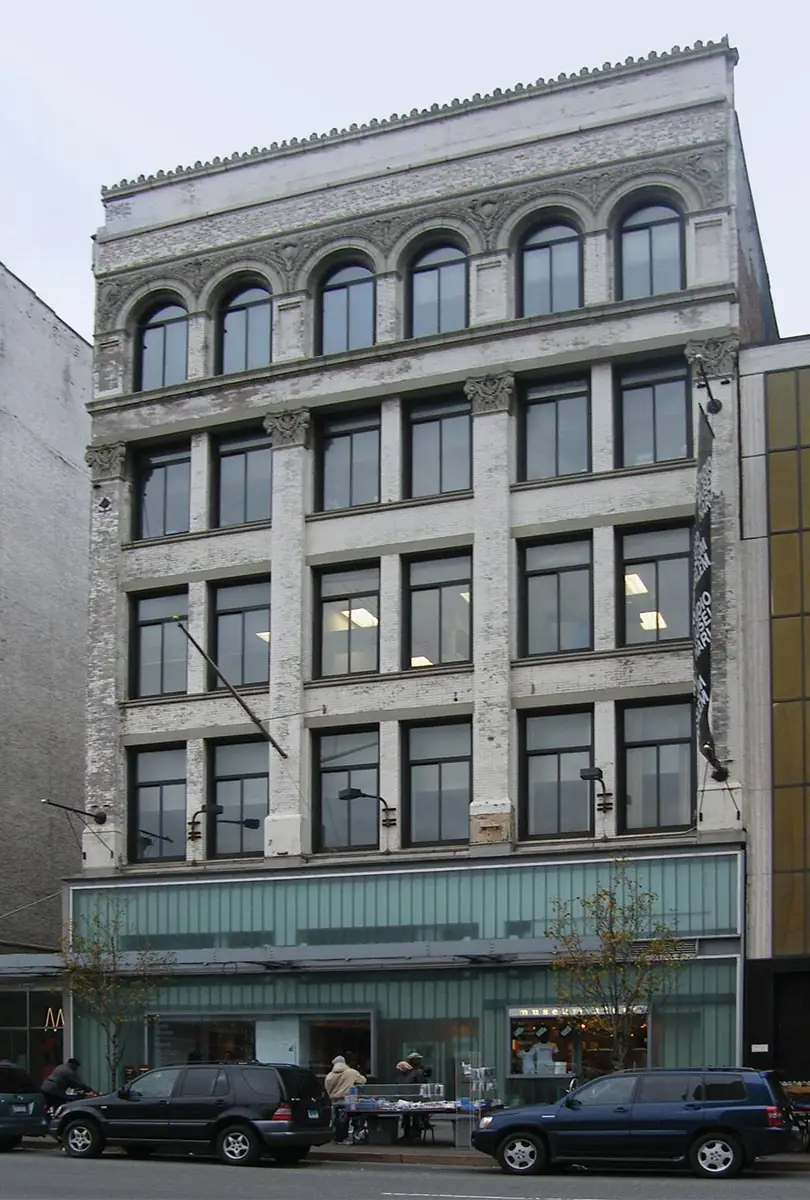
The Studio Museum’s now-demolished former building was renovated by J. Max Bond Jr. in the early 1980s. Photo © Americasroof, WIkimedia Commons, click to enlarge.
The Studio Museum opened in 1968 in a loft space just north of Marcus Garvey Park, a Harlem landmark. In the summer of 1982, it moved two blocks to the multistory former New York Bank for Savings on West 125th Street, the renovation of which was designed by Bond (1935-2009)—a partner at Davis Brody Bond who also designed such notable buildings as the Martin Luther King Jr. Center for Nonviolent Social Change in Atlanta and the Birmingham Civil Rights Institute. Years later, the museum excavated the vacant lot next door to construct a narrow, subtle addition. Then, in 2018, the museum closed its doors, interspersed programming throughout Harlem, and prepared for full demolition and construction of a new building by Adjaye Associates in partnership with Cooper Robertson.
Current director Thelma Golden, in a 2019 conversation with art historian James Cuno, described Bond’s work on the former building as a “prime example of adaptive reuse, which was being done all over Harlem at that moment, that is, buildings that [had once had] another life that were now underused, or perhaps even vacant, that were being reclaimed and creating, in the reclamation, new institutions for the Harlem that was becoming.” Though formally idiosyncratic and at times logistically cumbersome (few tall walls, fewer rooms for siloed shows), Bond’s interiors created space for a museum that had purpose, and, because of this, the occasional “work-arounds” only gave the museum more presence. Golden explained that, without a loading dock, pieces larger than 8 feet had to be carried across 125th Street: “Now, people in the neighborhood love that, right? And I am glad that we provided those wonderful interventions of art in real time on the street—but I am so thrilled that this new building has a loading dock that a truck can back into.”
Talk of erecting a new building began in the late aughts when it became clear that the 1980s HVAC systems had had enough. Though I think of Bond’s building as a sacred space, I do understand how exciting it would be, as an artist, curator, conservator, or art handler, to finally work in a building that could serve practical needs, that has a loading dock as well as working mechanical systems. It was time. And though it was difficult to let go of the old space, the museum serves a changing dynamic with its context. And while symbolic, Bond’s work was not designed as pure symbol—it was conceived out of Harlem, and set within a building that had already had another life. The institution’s power is similarly defined, not by the spatial choreography or solved corner problems of its lobby, but, rather, by the space it creates for diasporic artists and for the social and cultural networks that extend far beyond the museum’s walls.
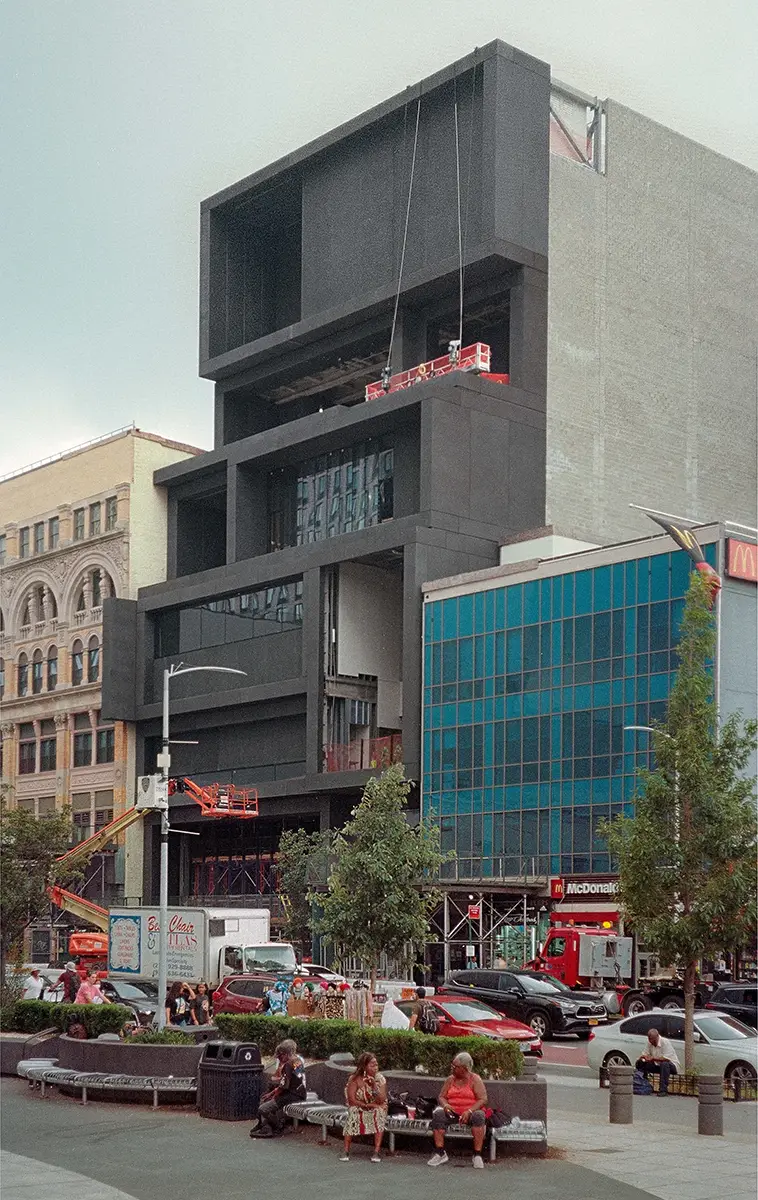
The Studio Museum’s new building, by Adjaye Associates with Cooper Robertson, is rising in Harlem. Photo © Yaxuan Liu
And, so, in the summer, when news broke that sexual assault and harassment allegations were made against David Adjaye by three employees, and the museum, as a result, cut ties with the architect, this seemed to me just as well. I did not feel the force that propels a museum to waver—I only perceived a shift in the most recent marketing strategy. Adjaye was never the power behind such a far-reaching institution. Like the National Museum of African American History and Culture, which was designed by a team including Bond and Phil Freelon along with Adjaye and SmithGroup, and which took sweeping collective action over a century to get built, the Studio Museum cannot be defined by one person or one building envelope. It is, instead, the child of infinite networks of care, and through directorship alone has undergone different and distinct eras. Which is all to say, the Studio Museum in Harlem was never about the building.
Sans starchitect, I am excited to step into the new space. Though it is not yet complete, its parti of varied, stacked galleries, able to accommodate larger works and more visitors than the old building, has already taken shape. A generous glass-fronted space by the entry, described by the museum as a “reverse stoop,” will become a kind of public living room for the neighborhood. Seen as one strolls down 125th Street, the new building has a weighty presence but does not tower over passersby.
I hope that the museum will, like the adaptively reused building reconfigured under Bond, take this present reality, what has been given to it, to redefine, reclaim, and recontextualize this new phase of the museum’s history, and use the new building to acknowledge and unpack this present moment with an intimate community that holds global recognition. Put more succinctly, let’s not play ourselves. Let Harlem residents and museum artists, curators, and educators, talk about what has happened, what it means to part ways with a “starchitect”-led firm this late in the construction phase, together. Let this conversation begin within the museum, with Harlem residents. And let us all celebrate what it took to create this space, to create both refuge and platform for diasporic artists. Let us not be distracted by spectacle, for, in the words of scholar Christina Sharpe, “Spectacle is not repair.”
Send pitches and submissions for future editions of Forum to ARForum@bnpmedia.com.


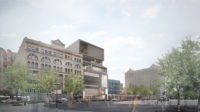
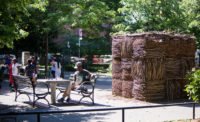
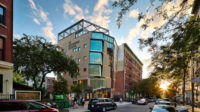
Post a comment to this article
Report Abusive Comment